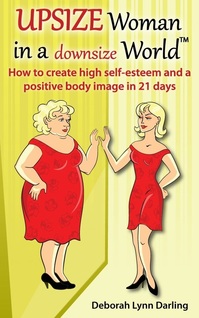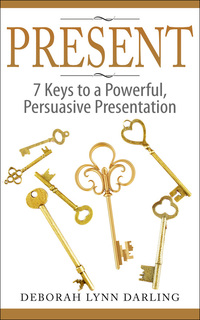In the speaking business, there’s a lot of controversy over whether or not a person should use notes. Some trainers tell their students that using notes makes them appear less sure of their material and not as confident. While I disagree with this philosophy, I must admit that all too often I see people use notes incorrectly. They are either so focused on their notes they forget to have a conversation with their audience, they’re using their PowerPoint as their notes or they have succumbed to the notion of no notes at all. In fact, one of the most common questions we get in our workshops is “How do you feel about using notes?” Our response is always the same—notes are fine as long as you use them properly. There are, however, some guidelines for using notes and once you know them you’ll actually be in greater control of the material you’re delivering and as a consequence you’ll appear more confident. So let’s get down to the business of notes.
Let’s first talk about what not to do.
Let’s first talk about what not to do.
Note Don’ts:
1. Do not use 3 x 5 cards
3 x 5 cards are a recipe for disaster. With their limited space, you need to write very small. This makes it very difficult to view the card unless you have written in very large letters or have only put one idea on a card, in which case you will need a lot of cards. The more cards you have the greater the recipe for disaster. Should the cards drop to the floor, even if they are numbered, it takes time to get them back in order. This leaves your audience watching and wondering about your credibility.
2. Don’t use your PowerPoint as your notes
Quite often, I see people using their PowerPoint or their computers as their notes. Since there is an old adage in speaking that says, “Stand by the screen and not the machine” you run the risk of being seen as note dependent. This also decreases your credibility. You also have to look down or turn your back on your audience and you lose your connection.
3. Never read from your notes
Reading from your notes keeps you focused on the paper and reduces your chances of making a connection with your audience. When you read from your notes you also lose normal voice inflection. These two components are important for a persuasive presentation. Without them, you raise serious doubts about your status as an expert. NOTE: Having said this, there are a few occasions, which I will discuss under the “Dos” where reading from your notes is okay. This is rare, but there are those circumstances where this rule does not apply.
4. Don’t try to hide your notes
Have your notes in plain sight. Everyone knows you have them and by trying to hide them you draw greater attention to them. It might be difficult to imagine for some people but the more comfortable you are with having notes, the more comfortable your audience will be with them as well.
5. Don’t try to memorize your presentation in lieu of reading notes
If you try to memorize your presentation you will inevitably either forget to say something of great importance or you’ll lose your place and come up blank with that deer in the headlights look. When this happens you’ll become very nervous and it’s amazing how quickly that nervousness is conveyed to your audience. Nerves make us come across as stilted and once again we lose credibility.
Note Dos:
1. Outline Key Points
Your notes should be in bullet points with just key concepts, not full sentences, unless you have a quote that needs to be read. Just as PowerPoint, White Boards, Flip Charts etc. are visual aids for your audience think of notes as being your visual aids.
2. Use 8.5 x 11 paper
Use a one-sided 8.5 x 11 sheet of white paper double spaced. Make sure that the font size is large enough—16-20 point font size and use upper and lower case letters. Studies show that it is easier to read a combination of upper and lower case letters than all CAPS. A good rule of thumb is to have 1 sheet of paper for every hour of speaking.
3. Have a hard backing to your notes
I like to use a manila folder to anchor my notes. If I have three sheets of notes, I staple them together on the right side of the folder at the top. I can then turn the pages over the top of the folder when I am ready for the next page of notes. The hard backing allows me to make the notes an extension of my hands. I can gesture with them and I do not need to worry that they are going to rattle if I get a bit nervous. If you do this you also won’t need to worry about folding them or tapping them up against your leg when the nerves get to you.
4. Pause to read your notes
When you need to look at your notes, stop talking. This is crucial. If you talk while you are looking at your notes, you are drawing attention to your notes. To make sure this does not happen, just stop talking, bring your notes up to look at them—take as long as you need—and when you are ready, put your notes back down to your side, engage with your audience and begin talking. As long as you do not speak until you are engaged with your audience, the audience will never focus on the notes. This may seem like a long time to you, but it will not to your audience. Your audience will actually appreciate the time you are taking so they can figure out where to file the information in their brains that you have already given them. It is a win, win.
5. If you must read from notes let them know this up front
There are times when you will need to read from your notes. If you have a quotation or a statistic that must be conveyed accurately and precisely; you are presenting legal or regulatory information; you have to deliver a company announcement or policy statement—in cases such as these you will want to read verbatim. But the key is to let them know that you are going to do this before you do it. Let them know just before you read from the notes that “I have some regulatory information that I’d like to share with you. I’d like to read it verbatim to make sure I convey it exactly as it’s written.” In this way you maintain your credibility.
The key to a great presentation is in preparing the material in a logical fashion. Make sure you have your key points and supporting material outlined in bullet points. Then practice out loud. The more you rehearse the less likely you will need notes. The key is to rehearse enough that you know your material by heart. You want to have the notes but not need the notes. By putting your talk together in this way, should you be taken off course by a question or comment you can get right back on track. By having your notes with you, you will know what you need to cover and where you need to go next but will appear credible to your audience because you are using your notes properly.
Debbie Darling, ©2015 The Presentation Pros
Read more of The Presentation Pros blog HERE.
1. Do not use 3 x 5 cards
3 x 5 cards are a recipe for disaster. With their limited space, you need to write very small. This makes it very difficult to view the card unless you have written in very large letters or have only put one idea on a card, in which case you will need a lot of cards. The more cards you have the greater the recipe for disaster. Should the cards drop to the floor, even if they are numbered, it takes time to get them back in order. This leaves your audience watching and wondering about your credibility.
2. Don’t use your PowerPoint as your notes
Quite often, I see people using their PowerPoint or their computers as their notes. Since there is an old adage in speaking that says, “Stand by the screen and not the machine” you run the risk of being seen as note dependent. This also decreases your credibility. You also have to look down or turn your back on your audience and you lose your connection.
3. Never read from your notes
Reading from your notes keeps you focused on the paper and reduces your chances of making a connection with your audience. When you read from your notes you also lose normal voice inflection. These two components are important for a persuasive presentation. Without them, you raise serious doubts about your status as an expert. NOTE: Having said this, there are a few occasions, which I will discuss under the “Dos” where reading from your notes is okay. This is rare, but there are those circumstances where this rule does not apply.
4. Don’t try to hide your notes
Have your notes in plain sight. Everyone knows you have them and by trying to hide them you draw greater attention to them. It might be difficult to imagine for some people but the more comfortable you are with having notes, the more comfortable your audience will be with them as well.
5. Don’t try to memorize your presentation in lieu of reading notes
If you try to memorize your presentation you will inevitably either forget to say something of great importance or you’ll lose your place and come up blank with that deer in the headlights look. When this happens you’ll become very nervous and it’s amazing how quickly that nervousness is conveyed to your audience. Nerves make us come across as stilted and once again we lose credibility.
Note Dos:
1. Outline Key Points
Your notes should be in bullet points with just key concepts, not full sentences, unless you have a quote that needs to be read. Just as PowerPoint, White Boards, Flip Charts etc. are visual aids for your audience think of notes as being your visual aids.
2. Use 8.5 x 11 paper
Use a one-sided 8.5 x 11 sheet of white paper double spaced. Make sure that the font size is large enough—16-20 point font size and use upper and lower case letters. Studies show that it is easier to read a combination of upper and lower case letters than all CAPS. A good rule of thumb is to have 1 sheet of paper for every hour of speaking.
3. Have a hard backing to your notes
I like to use a manila folder to anchor my notes. If I have three sheets of notes, I staple them together on the right side of the folder at the top. I can then turn the pages over the top of the folder when I am ready for the next page of notes. The hard backing allows me to make the notes an extension of my hands. I can gesture with them and I do not need to worry that they are going to rattle if I get a bit nervous. If you do this you also won’t need to worry about folding them or tapping them up against your leg when the nerves get to you.
4. Pause to read your notes
When you need to look at your notes, stop talking. This is crucial. If you talk while you are looking at your notes, you are drawing attention to your notes. To make sure this does not happen, just stop talking, bring your notes up to look at them—take as long as you need—and when you are ready, put your notes back down to your side, engage with your audience and begin talking. As long as you do not speak until you are engaged with your audience, the audience will never focus on the notes. This may seem like a long time to you, but it will not to your audience. Your audience will actually appreciate the time you are taking so they can figure out where to file the information in their brains that you have already given them. It is a win, win.
5. If you must read from notes let them know this up front
There are times when you will need to read from your notes. If you have a quotation or a statistic that must be conveyed accurately and precisely; you are presenting legal or regulatory information; you have to deliver a company announcement or policy statement—in cases such as these you will want to read verbatim. But the key is to let them know that you are going to do this before you do it. Let them know just before you read from the notes that “I have some regulatory information that I’d like to share with you. I’d like to read it verbatim to make sure I convey it exactly as it’s written.” In this way you maintain your credibility.
The key to a great presentation is in preparing the material in a logical fashion. Make sure you have your key points and supporting material outlined in bullet points. Then practice out loud. The more you rehearse the less likely you will need notes. The key is to rehearse enough that you know your material by heart. You want to have the notes but not need the notes. By putting your talk together in this way, should you be taken off course by a question or comment you can get right back on track. By having your notes with you, you will know what you need to cover and where you need to go next but will appear credible to your audience because you are using your notes properly.
Debbie Darling, ©2015 The Presentation Pros
Read more of The Presentation Pros blog HERE.





